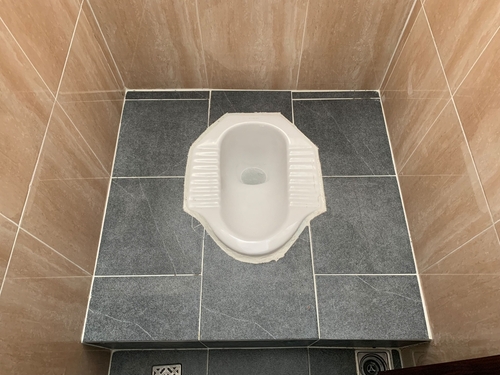Traveling to Asia for the first time is an adventure filled with new cultures, amazing cuisines, and unforgettable experiences. However, for many travelers, one thing that often comes as a surprise is the stark difference in bathrooms compared to Western setups. Whether you’re planning a trip to bustling cityscapes like Bangkok or rural landscapes in Vietnam, knowing what to expect from bathrooms in Asia can save you a lot of confusion (and awkward moments).
This guide will walk you through the essentials of using bathrooms in Asia, how they differ from what you’re used to, and practical tips to ensure you’re well-prepared.
What to Expect When Using the Bathroom in Asia
Asian bathrooms vary widely across the region, depending on the country, location (urban vs. rural), and whether you’re using a public or private facility. Here’s a breakdown of what you might encounter:
1. Squat Toilets
- What are they?
Squat toilets are a common feature in many parts of Asia, especially in rural areas and older public facilities. These toilets require you to squat rather than sit, which can be a bit of a challenge for those accustomed to Western-style toilets.
- Where will you find them?
Squat toilets are more prevalent in countries like China, India, and Indonesia, although they exist throughout the continent.
2. Western-Style Toilets
- Modern urban centers like Tokyo, Seoul, and Singapore almost always have Western-style toilets, and many come with advanced features like heated seats, built-in bidets, and even music for privacy.
3. Bidets and Water Sprays
- Many Asian bathrooms use water for cleaning instead of toilet paper. You’ll often find a bidet system or a handheld water spray, commonly called a “bum gun.”
- This is a hygienic solution, but if you’re not accustomed to it, it can take a bit of practice.
4. Toilet Paper (or Lack Thereof)
- Toilet paper isn’t always provided in public restrooms, so it’s a good idea to carry tissues with you. Some restrooms might have vending machines selling small rolls of paper.
5. Shared Facilities
- Hostels, train stations, or traditional guesthouses (such as ryokan in Japan) often feature shared toilets, so be prepared for less privacy in some accommodations.
Differences Between Asian & Western Bathrooms
Here are some notable differences travelers should be aware of:
- Privacy: Some older restrooms, particularly in rural areas, may have less privacy, such as open-air setups or stalls with partial doors.
- Shower and Toilet in One Space: Wet bathrooms, where the shower and toilet are in the same area, are common in many Asian countries.
- Foot Cleaning Stations: Some traditional Asian homes and mosques may have specialized foot-washing areas.
Essential Tips for Travelers
1. BYO Supplies
- Always carry a small packet of tissues and hand sanitizer. Soap isn’t always provided, even in public restrooms.
2. Learn the Etiquette
- Be aware of basic restroom etiquette in your destination country. For example, in Japan, many restrooms provide slippers for toilet use only.
3. Be Flexible
- If squat toilets aren’t your thing, you’ll get used to them faster than you think. Bend at the knees and place your feet on either side of the toilet; trust us, it works.
4. Practice Using Bidets
- If you’ve never used a bidet or water spray before, don’t stress. Test it out in private accommodations to get comfortable.
5. Coins & Small Bills
- Many public restrooms, especially in Southeast Asia, may charge a small fee for use (usually $0.10–$0.50). Keep spare change handy.
6. Download Restroom Finder Apps
- Apps like “Flush” or “Toilet Finder” can help you locate nearby facilities, complete with user reviews.
Bathrooms in Iconic Asian Destinations
Here’s a quick look at what to expect in some popular travel destinations:
Thailand
Public restrooms can range from squat toilets in markets to clean paid facilities in shopping malls. Toilet paper is rare in rural areas, so bring your own.
Japan
Japan offers some of the most advanced toilet technology in the world, from heated seats to automatic lids. Don’t be surprised if you see buttons for flushing sounds or even a built-in dryer.
India
Restrooms in India can be basic, especially in rural areas. Squat toilets are common, and water is the main method for cleaning. Stay prepared by carrying tissues, as toilet paper is often unavailable.
China
Public toilets in urban China may have squat setups, and you’ll need to bring your own supplies. Higher-end facilities (such as those in luxury hotels) will have Western-style toilets.
FAQs for Travelers
What should I carry to stay prepared?
Always carry tissues, hand sanitizer, and small change for restroom fees. A quick-drying travel towel can also come in handy.
Are restrooms safe for tourists?
Generally, yes. However, in rural or crowded areas, avoid leaving valuables unattended, and seek out better facilities in major establishments.
Can I avoid squat toilets completely?
If you stick to larger cities, tourist-friendly areas, and upscale hotels or restaurants, you’ll likely find Western-style toilets. However, being open and flexible to using a squat toilet can simplify your experience.
